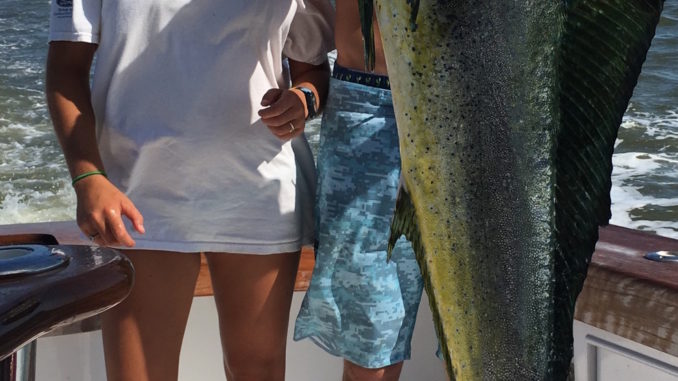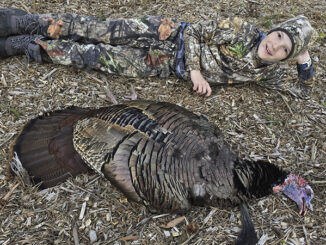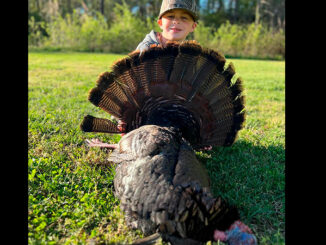
2018 should be banner year for gaffer dolphin
The 2017 fishing season for dolphinfish (mahi mahi) along the coast of the Carolinas and including the entire Southeastern Atlantic region was a bad news/good news story.
The bad news was the fishing for gaffer or mature mahi mahi was very poor as had been predicted by scientists studying the fishery. The good news was that indications are the 2018 dolphin season will be a very good one, also predicted by the fishery scientists.
Key to the success, or lack of it, for dolphinfish lies with the annual occurrence of young of year fish. In 2016 scientists and fishermen alike were stunned by the lack of YOY dolphin in the fishery.
“The virtual disappearance of young-of-the-year fish in 2016 was a blindside for fishery scientists,” said Don Hammond of Charleston, S.C., retired S.C. Department of Natural Resources fishery biologist who founded the Dolphinfish Research Program and ran it for 16 years before retiring this year. “Not only did we not see it coming, we still do not know what caused it.”
As a result, the 2017 fishing season was poor for gaffer-sized, adult dolphinfish, he said. Based on tagging reports from recreational fishermen and charter boats, the average catch per boat trip in 2017 was 5.72 dolphinfish, a 28.8 percent decline from the average trip catch of 8.04 fish per trip in 2016.
“For South Carolina anglers, the months of April and May have come to represent the best fishing for gaffer-size dolphin, 36 inches fork length or more. In 2016, only three of the 126 boat trips surveyed in April and May did not catch a single dolphin. In 2017, 18 of the 152 boat trips surveyed in April and May did not catch a dolphin, roughly a 12-percent skunk rate at a time when the fishing should be at its best.”
Hammond said the one fact that fishery managers know for certain is that you must have small dolphin each year in order to have big fish in the fishery the following year. He added that the vast geographic range of the U.S. East Coast dolphin stock is the saving grace of the fishery.
In 2016, after observing the decline in YOY fish, Hammond said scientists were stumped as to the cause. Speculation ranged from man-made environmental issues to natural phenomena.
Hammond pointed to the possibility of latent effects from the 2010 Deep Water Horizon oil rig explosion which spilled more than 3 million barrels of crude oil into the northern Gulf of Mexico, contaminating the spawning habitats for many fishes, including dolphin.
But, Hammond said then that the best case scenario would be that the low numbers were the result of some subtle change in North Atlantic ocean currents that threw the YOY migration off, and there could be a return of strong numbers of gaffer fish and YOY dolphin in 2017. While gaffer fish numbers were down this year, the return of plenty of YOY fish elated scientists and anglers alike.
“With dolphinfish, as with other highly migratory species, there is a large part of their life that we know little about. We know that these fish utilize and even circumnavigate the Sargasso Sea, riding the ocean’s many currents as far south as the Caribbean Sea. This migratory route encompasses a vast area that could harbor large numbers of dolphinfish that would normally have traveled to the U.S. coasts but for some reason did not,” he said.
Whatever was going on during that 6,000-mile trip the dolphin make each year in the open Atlantic Ocean and the Sargasso Sea, the end result was the return of good numbers of YOY fish this year.
The YOY fish appeared in June and July when the older gaffer fish had all but disappeared and pushed the number of fish harvested those two months 52 percent higher than what was caught in 2016 – and the highest of any year surveyed, Hammond said.
“The run was so strong,” Hammond said, “that it allowed participating anglers to tag more than 1,500 fish, a number that is well above the annual average number tagged.”
That fact is extremely important for avid dolphin anglers, he said.
“This should be the indicator that we have been looking for that says next year, 2018, should have a much improved fishing season for gaffer dolphin. Now we will just have to wait to see if this materializes.”
Heading into retirement, Hammond has turned the reins of the Dolphinfish Research Program to the Beyond Our Shores Foundation, directed by fishery scientist Wesley Merten of Rockville, MD., who has worked with Hammond on dolphin research for the past six years.
Merten has issued a call for funding to continue the dolphinfish research and tagging program. He can be contacted at wess@beyondourshores.org or by phone at (787) 436-8300.
“Wessley brings new data management and analytical skills, as well as fresh ideas on ways to use the devices of the digital age to collect needed information about the fisheries that depend on dolphin,” Hammond said. “With his skills and enthusiasm, he will take the DRP to the next level.”



